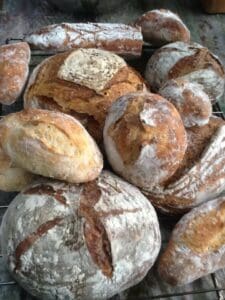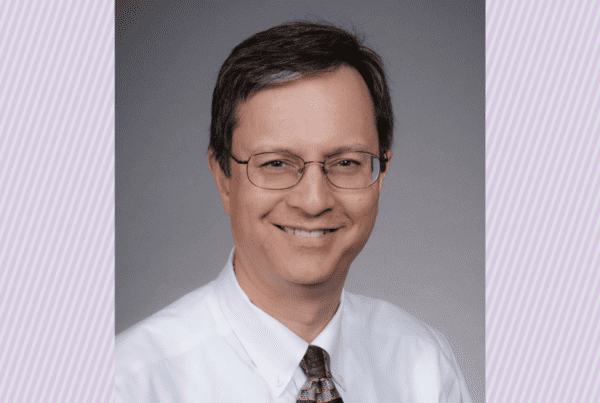What do biomechanics and sculpture making have in common? For Kevin McQuade, PT, MPH, PhD, associate professor in the Department of Rehabilitation Medicine’s Division of Physical Therapy, both are about analyzing and creating structure and function.
Using the science of mechanics
As a researcher, McQuade’s interests include clinical biomechanics related to the management and prevention of joint injury, and the role of muscle strengthening and neuromuscular training in maintaining fitness in the elderly.
At the intersection of biology and mechanics is biomechanics, and that’s where McQuade thrives. He is drawn in by the hands-on elements of design and customization of testing setups that measure human movement and forces generated during specific tasks, such as exercise.
While completing his post-doc at the University of Maryland, Baltimore, McQuade took a night welding class from the Maryland Institute College of Art where he learned the basics of welding and metal fabrication.
“I have always felt that everyone needs to have some artistic creative outlets,” says McQuade. “I don’t sing, paint or play music, but I do love creating structure in both whimsical and functional ways.”
McQuade saw that what he was learning could be applied both to his professional lab projects and his creative side projects. As a welding student with weekend access to the professional grade equipment, he constructed camera mounts for an infrared camera system and other testing apparatuses for his biomechanics lab in Baltimore. He also built metal framed tables, benches and coat racks for his home.
It was around this time when he received his first commission for custom window shutter frames made of 1/4-inch round steel rods. While he was building custom home pieces, he was also doing rehabilitation research for the Veterans Affairs Medical Center in Baltimore, supported by a career development award.
Utilizing his creative outlet
In 2004, McQuade made his way back to Seattle (he received his MPH from the UW School of Public Health in 1986). Now, McQuade’s home here in Seattle has some of his outdoor sculptures on display.

Abstract sculptures created by McQuade.
These sculptures often catch the attention of passerby who want to know where he got them, and then want a custom piece when they find out he is the artist.
He creates both indoor and outdoor functional objects and artistic sculptures. Most recently he constructed a custom-sized table framed out of 2-inch tubular steel inlayed with 2-by-12-inch mahogany planks for the top, for a faculty office at the University of Washington (pictured below).

Mahogany table created by McQuade.
“Welding is great because you can create anything you want and if you don’t like it, you just cut it, grind it and re-weld at any angle,” says McQuade. “It’s very three-dimensional.”
Each piece that Kevin makes begins with the creation of a custom design. He uses a plasma cutter and angle grinders and cutting wheels to cut and shape steel, which is then welded. He likes using acid patinas to generate an antique look on the steel and then seals the steel with a clear coat finish. It’s art, but it’s also science.
Merging science and art
McQuade sees beauty and science in our everyday body mechanics and movements. He is deeply passionate about improving health, functional performance and participation in life’s activities for people who have disabling conditions and diseases.
As a faculty member in the Department of Rehabilitation Medicine, Division of Physical Therapy, McQuade teaches Kinesiology and advises graduate student research projects in physical therapy and engineering and is actively involved in international collaborations in clinical biomechaics. He is also an active member of the International Society of Biomechanics.
A bready bonus
Besides his talents as a researcher and metal-works sculptor, Kevin is also an accomplished artisan bread baker. He regularly bakes whole grain breads and experiments with mixed grains, flours and sourdough. One of his most popular breads is a slow-fermented, fire-roasted corn and chile baguette that incorporates polenta and corn masa into the dough.
He is so dedicated to this artisanal craft that he even has a wood fired oven and has lined the floors of his home oven with firebrick to get a good hearth bake.

McQuade’s homemade sourdough.
McQuade’s creativity and technical skills are a harmonious recipe that contribute to the success of both his research and artistic projects.
Guest Writers: Sandra Hancock and Katherine Brooks


